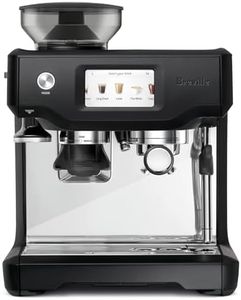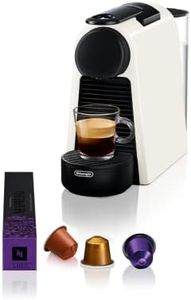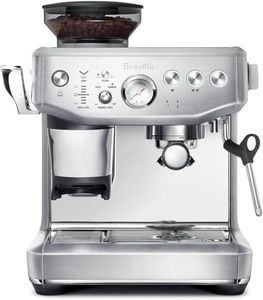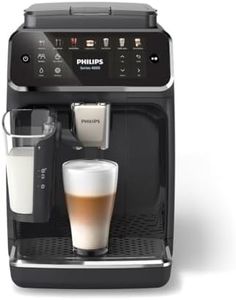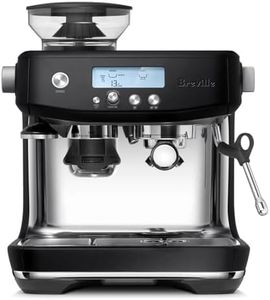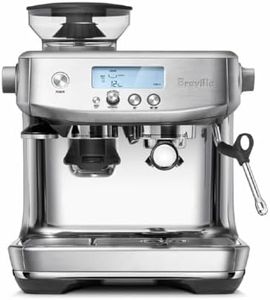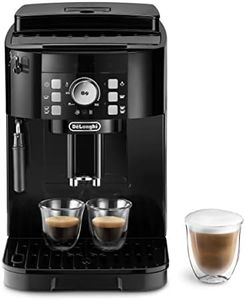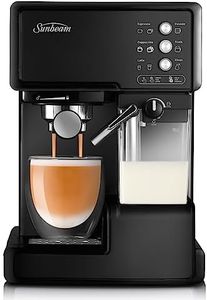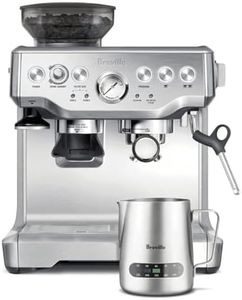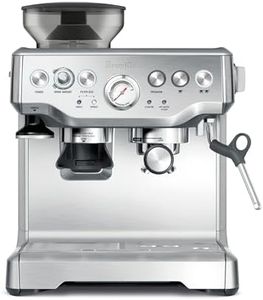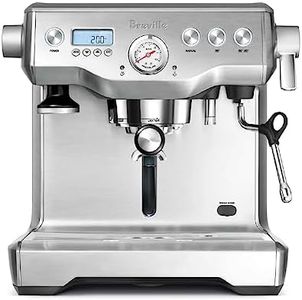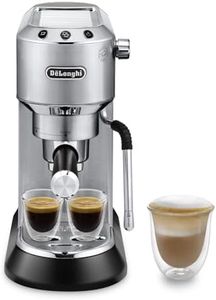We Use CookiesWe use cookies to enhance the security, performance,
functionality and for analytical and promotional activities. By continuing to browse this site you
are agreeing to our privacy policy
10 Best Affordable Espresso Machines
From leading brands and best sellers available on the web.Buying Guide for the Best Affordable Espresso Machines
Choosing an affordable espresso machine can be a bit overwhelming due to the many different features and specs available, but focusing on a few essential points can help you find the right fit for your needs. Start by thinking about how often you’ll use the machine, how involved you want to be in the brewing process, and how much space you have available in your kitchen. Consider whether you only want espresso drinks, or if you’d also like options for other beverages like cappuccinos and lattes. Remember, the best espresso machine for you is one that matches your habits, preferences, and comfort level with making coffee at home.Type of Machine (Manual, Semi-Automatic, Automatic, Pod/Capsule)The type of espresso machine determines how much control you’ll have and how much effort you need to put in. Manual machines require the most hands-on work, from grinding to tamping and controlling water flow, which is great for enthusiasts who enjoy the craft. Semi-automatic machines automate water flow but still need you to grind and tamp, striking a balance between involvement and convenience. Automatic machines control much of the process for consistency and ease, while pod or capsule machines use pre-measured pods for the quickest and simplest brew, though often with less customization. Think about how much you want to be involved: if you want fast and easy espresso, a pod or automatic machine might suit you best, while hands-on users might prefer manual or semi-automatic.
Pressure (Bars)Pressure, measured in bars, is vital because it affects how well the espresso is brewed, influencing both taste and crema (the foam layer on top). Most home machines offer 9-15 bars, but actual brewing often happens at around 9 bars. Machines under 9 bars may not extract espresso properly, while higher bars may be more marketing than function. For most people, something in the 9-15 range is ideal; go for machines with at least 9 bars of pressure, which will produce good espresso without being overly complicated.
Size and Water Tank CapacitySize refers to the physical footprint of the machine and how much water it can hold in its tank. A smaller machine is perfect for limited counter space or single users, while larger machines with bigger tanks are better for frequent use or making multiple drinks at once. If you only make a cup or two a day, a compact machine with a small tank is fine, but for families or entertaining guests, a larger tank saves you from refilling often. Measure your space and think about how many espressos you might make in a row to guide your choice.
Steamer/FrotherA steam wand or milk frother lets you make drinks like cappuccinos and lattes. Some machines have built-in steam wands for manual frothing, while others use automatic frothers for easier but less customizable results. If you love milk-based drinks, look for a machine with a reliable steamer. Budget machines may have simpler wands, which are still fine for occasional lattes; consider your preference for manual vs. automatic frothing and how much you’ll use this feature.
Ease of CleaningCleaning is important to keep your espresso tasting good and your machine working well. Some machines have removable drip trays, water tanks, and group heads for easier cleaning, while others might require more work. Simpler machines are often easier to clean, but look for features that make regular cleaning straightforward, like dishwasher-safe parts or auto-rinse features. If you want minimal maintenance, prioritize machines with easy-access parts and clear cleaning instructions.

